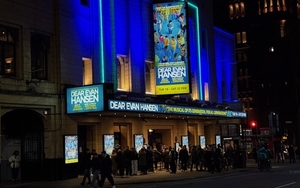Neil Sowerby gets the taste for traditional tipples given a crafty new cutting edge
IT seems fitting to begin our Cider Pilgrimage in the heart of Hereford Cathedral. Let’s call it a windfall moment as we strain to decipher a medieval Christian world view drawn across a stretched sheet of calf skin… and discover apples. So apt in a county of orchards.
I’d recommend ordering the locally sourced pork, apple and leek pie and sharing a bottle of Panting Partridge, their flagship perry
This is the Mappa Mundi, created around 1300 by one Richard Oldingham. It is the only complete world map of its time to have survived and its 1.59 x 1.34m canvas is teeming with illustrated wonders representing geography and history, hell, heaven and the path to salvation. Quite disorienting. Nothing is in our ‘right’ order. Jerusalem is at the centre, the British Isles in the bottom left hand corner and at the top is the East – home to Eden and expected site of Christ’s second coming. Hereabouts, in ‘India’, are sketched two robed figures attending to an apple tree, one shaking a bough with a stick, the other sniffing and gathering fruit. Are they harvesting?

These are the Gangenes, described on the Mappa as a people who lived near the River Ganges and survived only on the scent of apples. Indeed, so the myth goes, should they smell anything offensive they immediately perish. Would that include Strongbow, one of those commercial ciders that have devalued a great traditional tipple?

We are in Herefordshire in search of the real deal. If the immaculately mounted Mappa Mundi takes our breath away, so too do the remarkable craft ciders and perries we encounter in their heartland. Sorry, Somerset.
The likes of Oliver’s, Little Pomona, Ross-on-Wye, Gregg’s Pit, Artistraw and Newton Court are all small producer standard bearers, well worth a visit. There’s a true local pride in their achievements. The tourist board even promote Herefordshire Cider Circuits, recommending orchards along three cycling routes. Our visits are by car and we are circumspect sippers with narrow lanes to negotiate.
Just to stand in an orchard is to feel at one with nature and a unique heritage. All a bit farm gate yet, but cider tourism is taking off. Ross have their own on-site pub, the Yew Tree, while Newton Court have launched a purpose-built visitor centre, featuring a restaurant, cafe, farm shop and tour hub. This bright, airy space is a major investment for the Stephens family, who have run this 157 acre regenerative farm since 1991. I’d recommend ordering the locally sourced pork, apple and leek pie and sharing a bottle of Panting Partridge, their flagship perry (aka ‘pear cider’), or their acclaimed sparkling cider, Black Mountain.
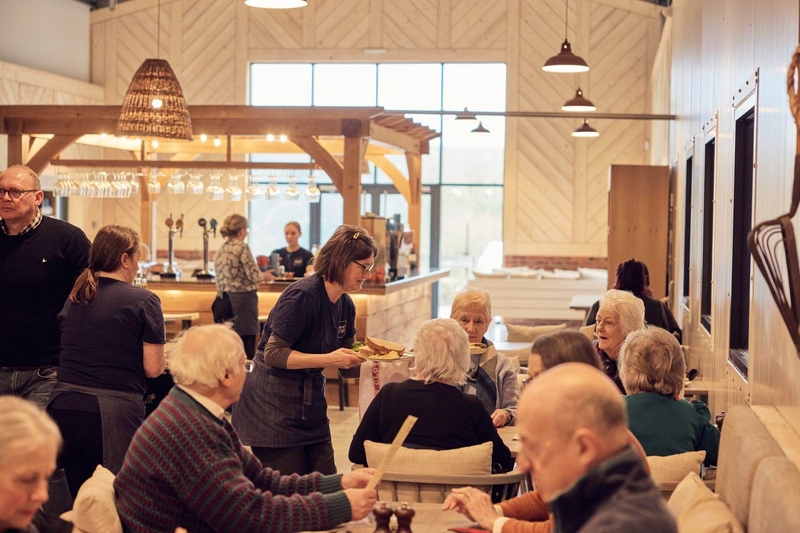

After which joining one of their cider tours might be hard to resist. We wandered into the organic orchards with Paul Stephens, who took over the day-to-day running of Newton Court from his father Tom. Sheep graze among the pear trees, while he tells us of the impact on perry’s taste of terroir and individual pear varieties – with delightful names such as Flakey Bark, Betty Prosser, Hendre Huffcap, Butt and Thorn. He also raises the perils of fireblight, a bacteria that can wipe out trees that have taken decades to mature. Sudden attacks, no known protection.

The same grim prognosis is repeated seven miles away at Oliver’s Cider and Perry, near the delightfully bucolic sounding hamlet of Ocle Pychard. Here we are granted an audience with ‘cider royalty’ Tom Oliver, not that you’d guess his global renown from the rustic surroundings and his understated manner. Yet as I write this he’ll be making personal appearances in New York State and Grand Rapids, Michigan. Not in his long-running role as tour manager/sound engineer for The Proclaimers but as an ambassador for cider and perry, a mentor for so many aspiring cider makers. Nearing retirement age, he shows no sign of slowing down.
His is a working farm, the shop/tasting room only open for three hours on Saturdays, but what a wealth of options to buy. Inside the former hop barn that is now his barrel store he treats us to one of his treasures. 20 years ago a single Coppy pear tree remained on the planet, tracked down in a remote spot by Oliver. Grafts have created young siblings but they are under threat from the dreaded fireblight. So when we taste a sample of single varietal Coppy, a sherberty work in progress, from the ancient tree that produced barely half a barrel last harvest, we are tapping into something fragile and magical.
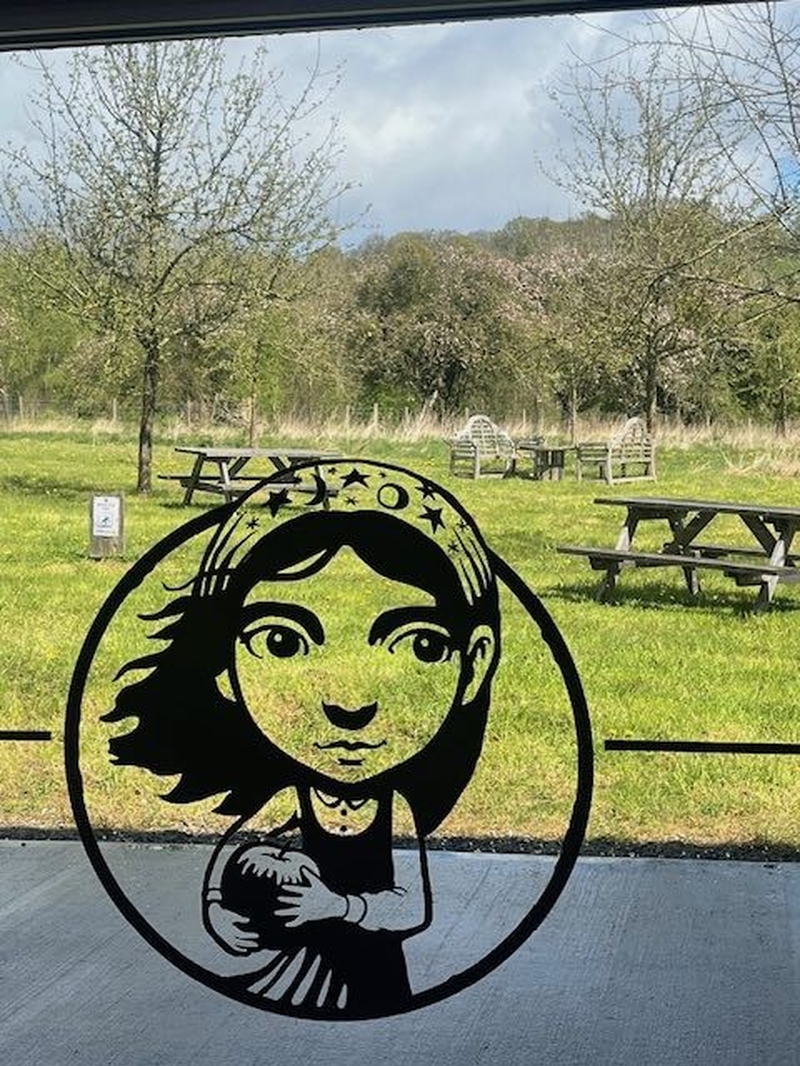

Cutting edge Little Pomona have learned at the master’s feet. Set up by James and Susanna Forbes, whose background is in wine and journalism, it is located near Bromyard. They are happy to welcome visitors to their taproom but do call ahead. Hops, cherries and quince are all incorporated into ciders that push the boundaries. If you’re biking or ensuring you drive responsibly try their Hard Rain Hot Pink. Just 3.4ABV, it’s a ciderkin, made from the second pressing of apples with the addition of water, hops and blackcurrant. It is in the words of the Forbes “a naturally sparkling juice bomb”.
Through to the end of September Little Pomona are running special Tours & Tastings once or twice a month on Sundays at 2.30pm, accompanied by a cheese board in the Cider Garden, weather permitting.

Hereford Cathedral – an intimate voyage of discovery
POMONA was the Roman goddess of fruitful abundance, with gardens and orchards in her remit. The 18th century diarist and gardener John Evelyn published an appendix to his great book on trees under that name – “concerning fruit-trees in relation to cider the making and several ways of ordering it.” 150 years later The Herefordshire Pomona was one of the first attempts to fully catalogue the existing varieties of English fruit. Many of the apples and pears illustrated can be found, precariously, today.
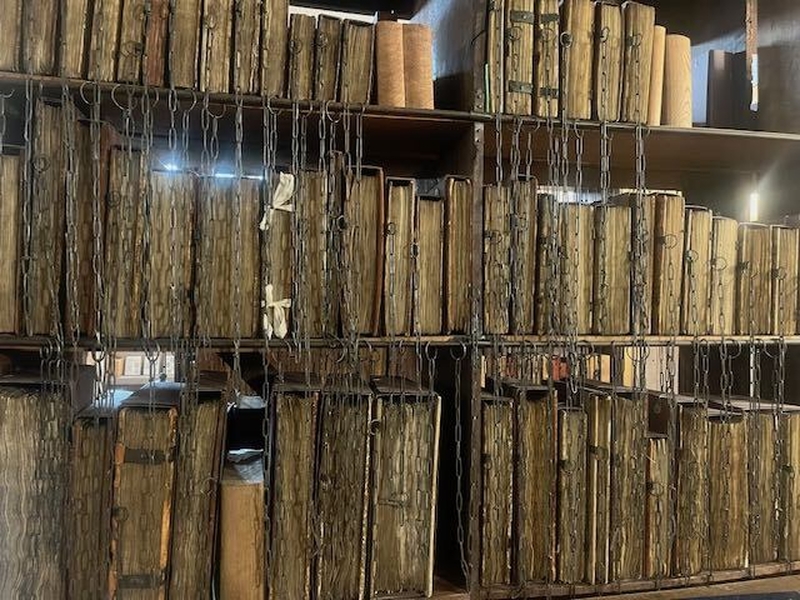
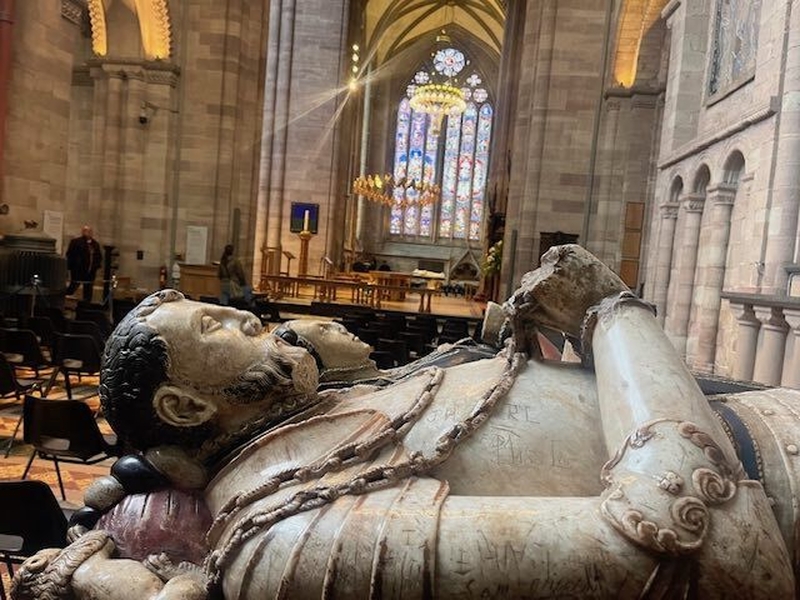
There’s a rare copy in the Chained Library of Hereford Cathedral, the largest such library left in the world, containing some 1,500 books, dating from around the year 800 to the early 19th century, including 227 medieval manuscripts. In the early 17th century, when the bookcases you see today were made, chained libraries were commonplace, protecting the precious word. It is a fitting lead-up to the Mappa Mundi (adults £7.50) in its special annexe, but the surprisingly intimate Cathedral is packed with other delights.


Seek out the Traherne Windows in the Audley Chapel. Installed in 2007, they are the work of master stained glass artist Tom Denny and dazzlingly recreate the visions of Herefordshire-based mystic Thomas Traherne.
A more whimsical fixture is the ‘extra leg’ of the 14th century knight Sir Richard Pembridge (died 1375), a veteran of the battles of Crecy and Poitiers. When his alabaster tomb was constructed, the effigy correctly showed him wearing the Garter insignia only on his left leg. The right leg was damaged during the Civil War. A replacement wooden leg wrongly included a garter, so a new alabaster leg, without a garter, was commissioned in the 19th century. The wooden leg has since been reunited with his tomb thanks to a benefactor.
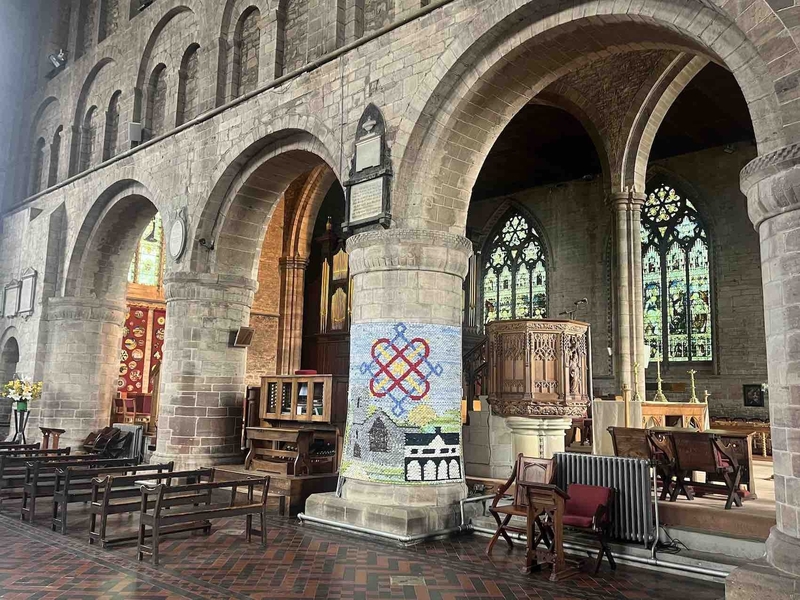
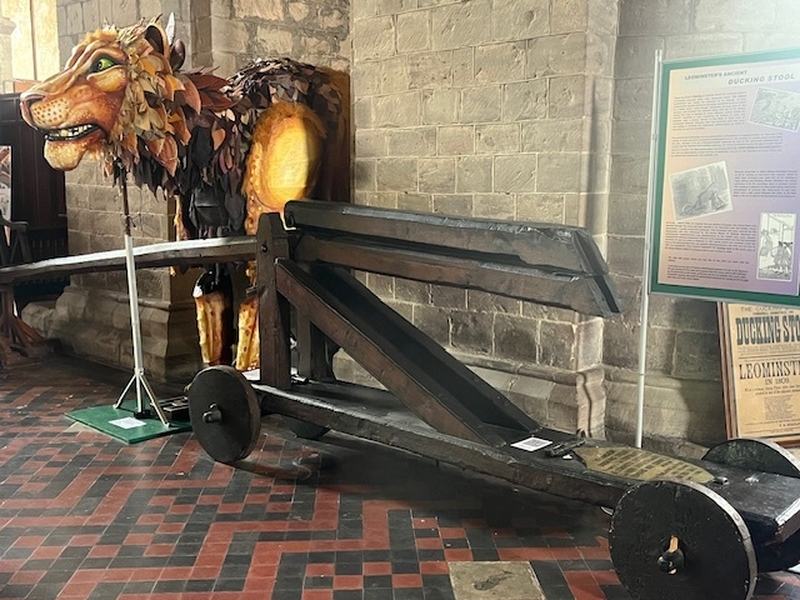
A true taste of terroir at The Riverside, Aymestrey
THERE’S wooden heritage aplenty in the rolling countryside of Herefordshire, notably in the timber-framed ‘Black and White Villages’. Devotees can even indulge in a 40 mile circular trail, kicking off in Leominster, an ancient market town whose Priory Church of St Peter and St Paul deservedly gets four stars in Simon Jenkins’ England’s Thousand Best Churches. The edifice with its imposing Norman tower is actually the remains of a monastic settlement set on the edge of town. Don’t miss one oddball object in the north aisle – the last ducking stool to be used in England. In 1809 Jenny Pipes was ducked in the local River Lugg. Alas, her crime remains a mystery.
Leominster with its warren of indie trader filled lanes was just a stop-off on our journey to The Riverside, a remarkable watering hole 15 miles up the Lugg valley at Aymestrey. En route we did take a slight churchy detour (and suggest you do) too at sleepy Mortimer’s Cross, in 1491 site of a particularly bloody Roses battle, won by the Yorkists. Our magnet, though, was another Jenkins 4-star, St John at Shobdon. Drive down an avenue of limes and there is nothing in the church’s exterior to suggest what lies inside – England’s most complete rococo ecclesiastical experience, fashioned by one of the architects of Horace Walpole’s Strawberry Hill around 1800. White wedding cake meets Figaro Countess’s boudoir. We loved it.
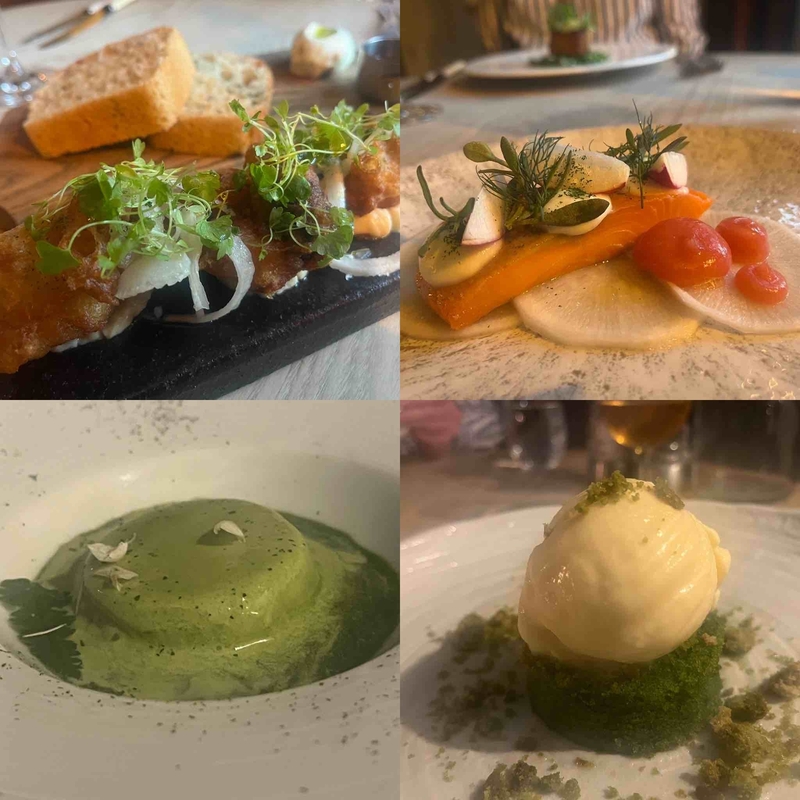
But not as much as we loved The Riverside, a 16th century sheep drovers’ inn set in a river loop, its hillside veg terraces steepling into wooded hills, for all the world like some English equivalent of the Dordogne. And the food self-taught chef/patron Andy Link is turning out is deeply rooted in his own Herefordshire terroir. We dined on local snails, faggots, rare breed Hereford beef, a sweet cicely parfait, finishing with nettle cake with lemon and thyme syrup, matched with ice cider. All this and it still felt like a proper pub where you could prop up the bar with a pint of Wye Valley Brewery’s Butty Bach.
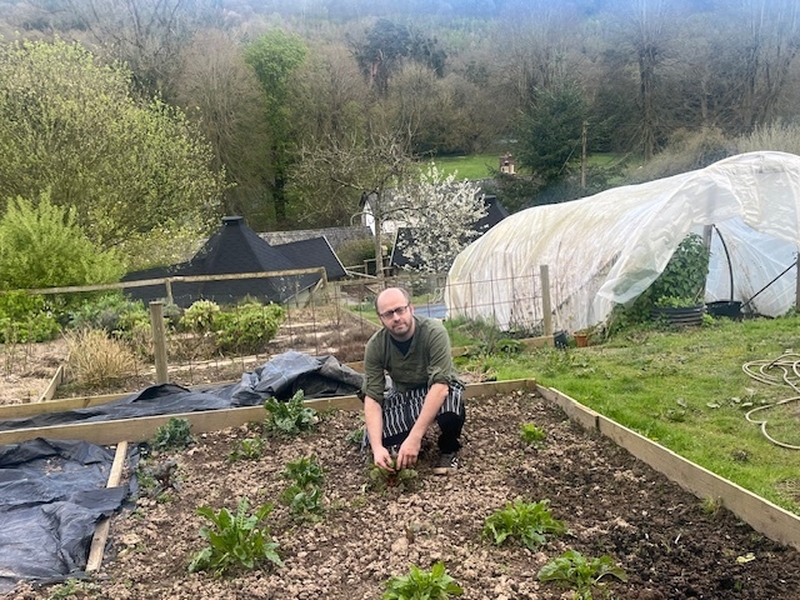
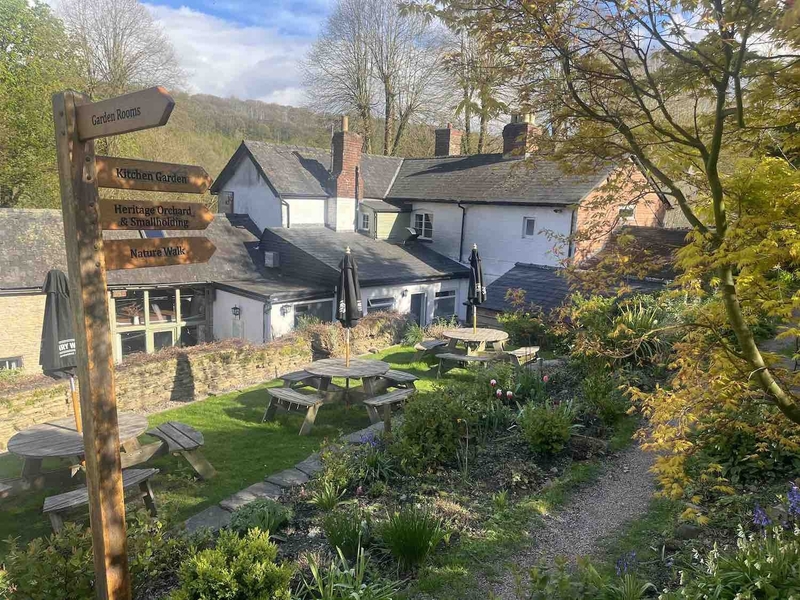
You can understand how in 2002 it was voted Great British Pub Awards 'Best Sustainable Pub’. Andy took us up to their organic growing plots, hewn out of the hillside during lockdown by himself and personable manager George Parkes. Between here and the half-timbered pub proper is the row of three quirky timber lodges, in one of which, Beechenbrook, we stayed, relishing the combination of under-stated luxury, such as underfloor heating and posh aromatics, with rustic seclusion.


The main buildings house further more traditional (and dog-friendly) bedrooms. The bar areas are solidly cosy with garlands of hops and a wood-burner. There’s a wealth of walks all around. We chose along the river, promised the possibility of otters and kingfishers. Alas, no sightings. As a base the location is brilliant, foodie Ludlow 10miles to the north, Hereford 20 miles to the south.
Hereford – what lies beyond the Mappa Mundi?
IF you can’t get out to the orchard hinterland there are great places in Hereford city to sample. Our favourite is undoubtedly The Hereford Beer House around the corner from our hotel base, The Green Dragon. We went in search of a West Coast IPA but there was a choice of four ciders in tap, including Oliver and Little Pomona, and a general feel of cider country bonhomie.
You can also buy a goodly selection of bottles to take away at the Museum of Cider, just across the river in Pomona Place (what else?). A Trust itook over the former Bulmer's cider factory and it opened in 1981. The family portraits remain in the old boardroom but it’s the ‘champagne’ cellars dating back to 1889 that evoke the legacy. Descend and you’ll find the racks where employees turned the heavy bottles of sparkling cider – what the French call degorgement.

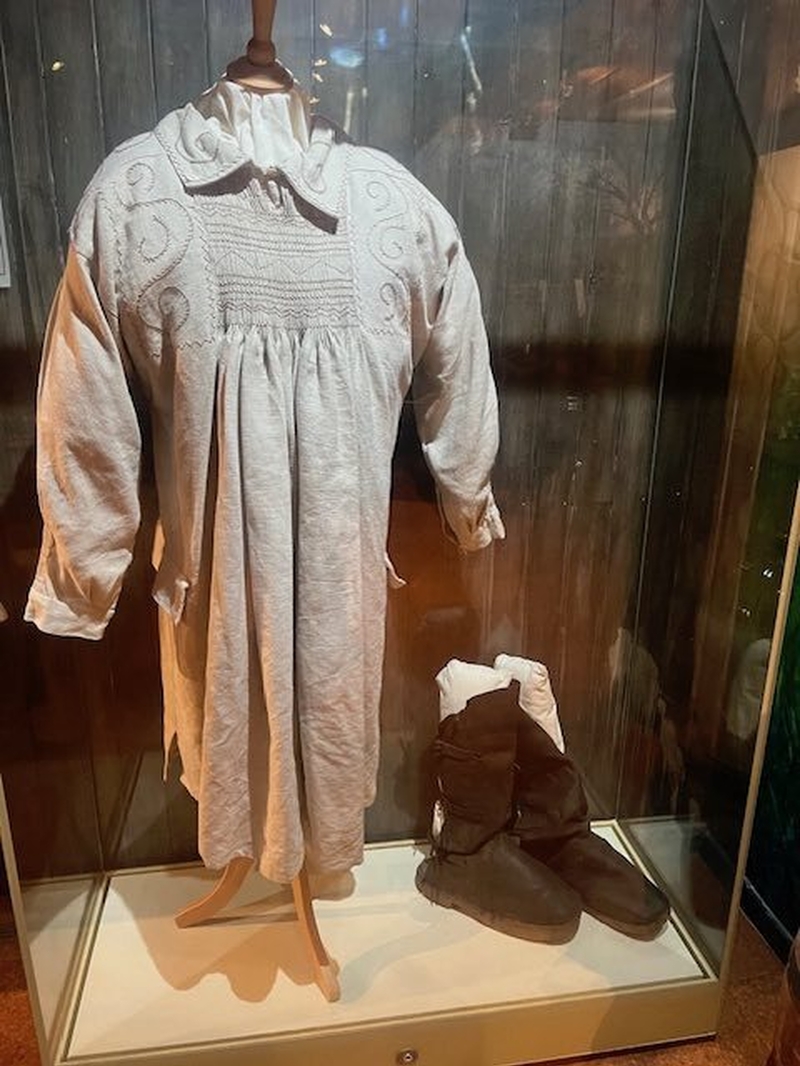
On the main floor you can trace the worldwide history of cider. There’s a 300-year-old French beam press and a collection of watercolours depicting the different types of apples and pears, but the star attraction is a rare collection of English lead crystal cider glasses dating from 1730, when cider went head to head with wine as the toffs’ drink of choice.
Without shame we stuck to Argentine Malbec with our dinner steaks in the buzziest dining venue in town, The Bookshop. The grass-fed beef, dry-aged in Himalayan salt for at least 26 days, was grilled on a handmade charcoal-fired Fogarty oven and the restaurant team major in fermenting, pickling and foraging. Expect Sunday roast in the courtyard garden to live up to all the accolades.


The Bookshop is located just behind The Green Dragon, a coaching inn dating back to at least the 16th century, which has recently been sympathetically restored, a few of its 83 bedrooms boasting four-posters. The foyer and remodelled 1920s style dining room where we breakfasted are particularly striking. The hotel feels an intrinsic part of the city. When we stayed they were preparing to celebrate the birthday of Sir Edward Elgar (guided walk, cream tea). The celebrated composer lived in Hereford between 1904 and 1911 and there’s a statue of him and his bicycle in the Cathedral Close, just down Broad Street from the Dragon.

On our last morning in the city we explored the Close and crossed the Wye to the River Walk. Here lies another, tiny statue, with the Cathedral as a backdrop. It’s of Dan, a bulldog belonging to its organist, a friend of Elgar's. The story goes that they were walking along the riverbank one day when the dog fell in down the steep bank.
He paddled to a place where he could pull himself out, and shook himself vigorously. "I bet you can't make a tune out of that!" was the organist’s challenge. Elgar took it up and the melody he wrote became part of the Enigma Variations. Let’s call it a Soggy Dog Story.
Fact File
Neil stayed at The Riverside Inn Aymestrey, Herefordshire. HR6 9ST. 01568 708440 and The Green DragonHotel, Broad Street, Hereford HR4 9BG. 01432 272506.
Full tourist information from Visit Herefordshire.
Check with individual cider makers for visiting times.
if you want to explore further the delicious world of cider and perry CAMRA have published a brace of books I heartily recommend: Modern British Cider by Gabe ‘The Ciderologist’ Cook (£15.99) and Perry – A Drinker’s Guide by Adam Wells (£17.99).
















